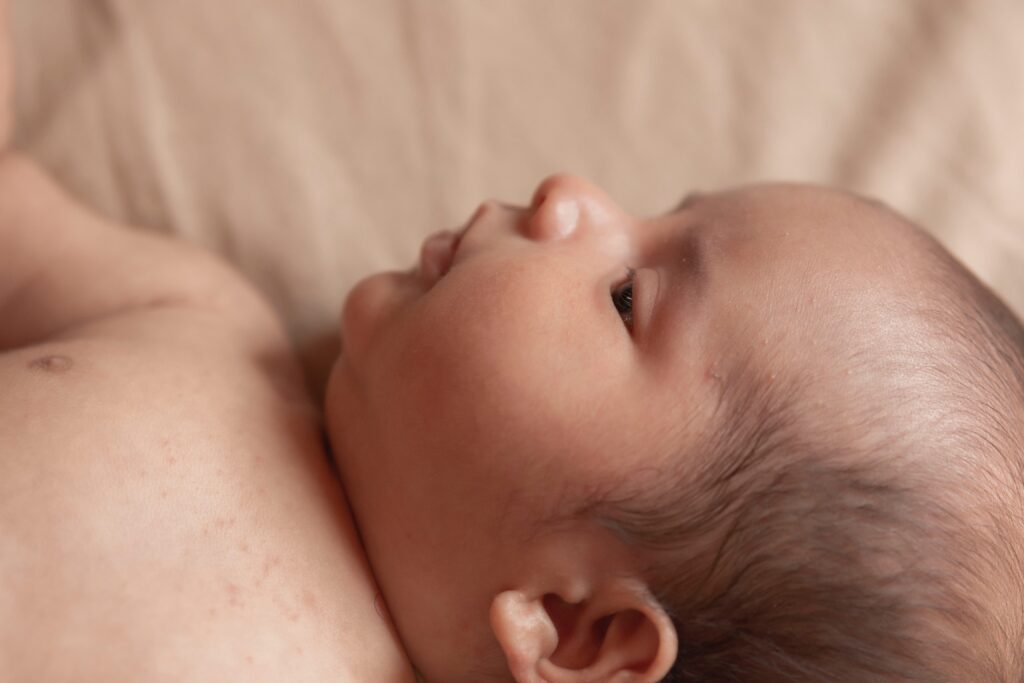Torticollis in Babies: Effective Treatments and Preventive Measures
Introduction
Torticollis, or “wryneck” as it is also known, is a condition characterized by the abnormal positioning of the neck caused by tightness in certain muscles. It can be painful and uncomfortable for both babies and adults alike but thankfully there are a number of treatment options available. In this article, we’ll explore understanding baby torticollis, the various physical treatments available, and preventive measures that can be taken to help avoid or reduce the chance of developing it. Read on for an in-depth look at how to treat torticollis in babies.
Understanding Baby Torticollis
Torticollis is caused when one of the muscles on either side of the neck is shorter than the other, causing it to pull the head in an unnatural direction. This can be caused by either muscle abnormality or a birth defect and may affect the flexibility and range of motion of the baby’s neck. The most common symptom associated with torticollis is difficulty moving the head from side to side or up and down. Other signs include limited movement, a visible tilt of the head, and discomfort when moving the neck in certain directions.
Physical Therapy as a Treatment Option
Physical therapy can help babies with torticollis stretch and strengthen the muscles of their necks and learn how to move their heads more comfortably. The physical therapist will design exercises specific to your baby’s needs that can be done at home to help maintain flexibility and range of motion. The therapist may also use manual stretching techniques while your baby is in the office in order to further relax the neck muscles.
Home Exercises for Baby Torticollis
In addition to physical therapy, there are exercises that can be done at home to help reduce discomfort and increase mobility. These exercises should only be done when supervised by an adult and should only be used for children over two months old. Popular exercises include gentle stretching of the neck muscles, rotating the head from side to side, turning the head upward and downward, as well as circular motions in each direction.
Infant massage can also be utilized to help the baby relax and increase flexibility in the neck muscles. The therapist or a knowledgeable parent can guide the massage, taking special care to address any tension they may find in the neck muscles.
Neck Pillows And The Dangers Of Their Use
Neck pillows are often used by parents to help keep their baby’s head aligned while sleeping. However, these devices may interfere with the baby’s ability to move their head from side to side and can cause further discomfort. If used incorrectly, neck pillows can also to increase the risk of SIDS. It is important that parents carefully consider the use of these pillows or any other type of device that restrains a baby’s movement.
Research has found PT is as effective as a neck pillow without the increased risks that come with placing an object in the sleeping area with a child.
Surgical Treatments For Severe Cases
In cases where PT or chiropractic care has not been effective, surgical treatment may be necessary for severe cases of torticollis. Surgeries are typically non-invasive but should only be used as a last resort.
In addition to surgery, splinting or bracing may be necessary. Braces are usually only used for babies under a year old and can help keep the head in the correct position until the muscles become stronger.
Preventive Measures To Avoid Torticollis
Torticollis can often be prevented by avoiding certain triggers or activities that can cause the head to twist or turn. This includes avoiding swaddling too tightly, making sure not to restrain the baby’s movement in car seats and strollers, and properly supporting a baby’s neck during breastfeeding/bottle feeding.
When To Consult A Healthcare Provider
If you notice signs of torticollis in your baby, it is important to consult a healthcare provider as soon as possible. These signs include head tilting to one side, limited movement of the neck in any direction, and difficulty turning the head. Early treatment is key for providing effective relief from the symptoms of torticollis.
Conclusion
Torticollis can be a difficult condition to manage in babies but thankfully there are several treatments that have proven successful for many parents. With physical therapy, chiropractic care, home exercises, and supportive devices like neck pillows, parents can help their baby get the relief they need from this condition. Additionally, preventive measures such as avoiding certain activities that can contribute to torticollis can help reduce its occurrence. Ultimately, if your baby is showing signs of torticollis it is important to consult a healthcare provider as soon as possible to ensure the most effective treatment.
With the right care and support, your baby can be on their way to a life free from torticollis!

